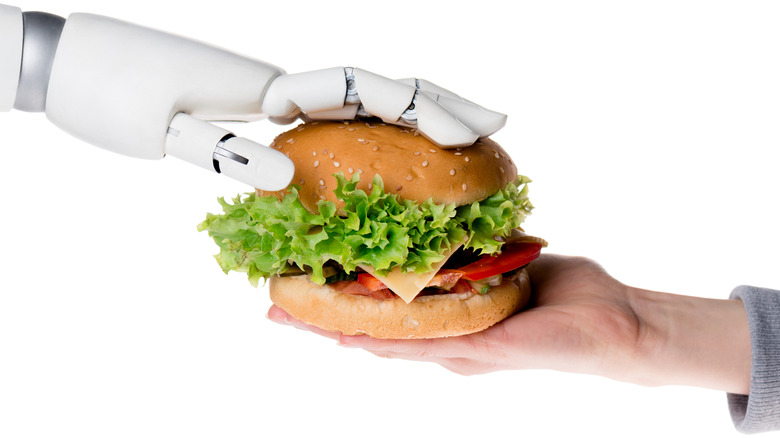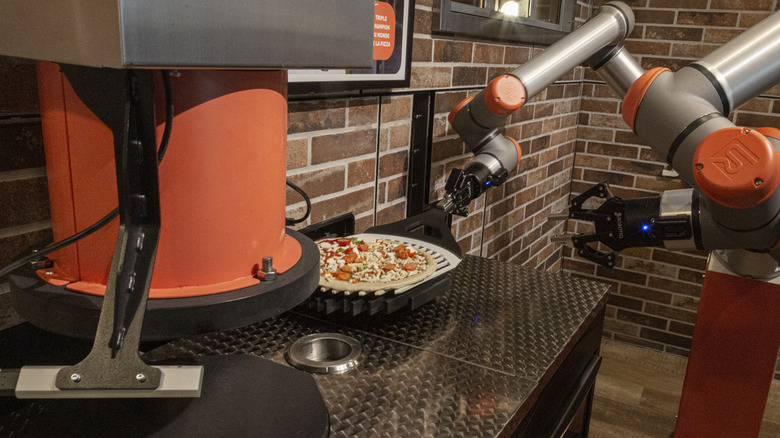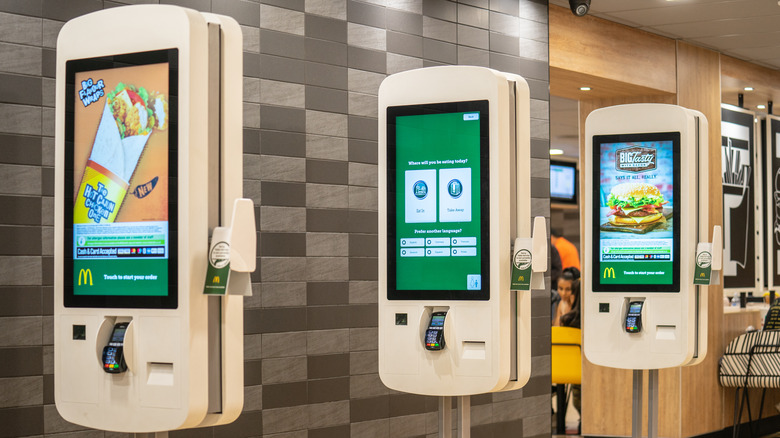How Many Fast Food Jobs Can We Actually Give To AI?
Preservatives aren't the only artificial thing behind fast food these days. A growing number of restaurant chains are turning to artificial intelligence as a replacement for human labor. Even before the coronavirus pandemic and the subsequent Great Resignation, the food service industry was struggling with a labor shortage, and the aforementioned events served only to exacerbate the issue.
In the midst of 2022, the National Restaurant Association reported that 65% of restaurants did not have enough workers to meet demands. Diners have felt the impact of this through longer wait times and reduced business hours as well as a growing number of restaurants implementing electronic kiosks for ordering. But the industry's changes are just beginning, and fast food now seems destined to progress regardless of any change in employee numbers.
The shift to AI in the fast-food industry underscores the deep divide between restaurant operators and workers. Surveys show that owners often blame the pandemic and a lack of motivated workers, while restaurant staff often say their real concerns are low wages and a work-life imbalance. If these issues were addressed, the workforce may recover, but many restaurants, particularly fast-food chains, are taking the cheaper, more efficient route of replacing human staff with robotic assistance. There is a limit to how far this can go, but most fast-food jobs are at risk of being replaced by AI in the near future.
AI takes many forms
Artificial intelligence can be applied to the foodservice industry in numerous ways, and you may have already encountered some of them. Voice-operated service systems built around conversational AI programs have already been implemented at many establishments. These are used in ordering kiosks and phone systems that replace traditional human assistance with a pre-recorded or computer-generated voice. Multiple fast-food giants have also tested AI drive-thru systems based around such technology, and some programs are even capable of analyzing the customer's voice to identify their disposition and suggest items based upon it.
AI is also being used in more behind-the-scenes roles. These include tracking transactions and consumer trends. Human workers are sometimes even having their jobs choreographed by AI systems that determine schedules and conduct performance evaluations.
In the kitchen, AI may be applied to robotic labor. In 2022, global restaurant consultancy firm Aaron Allen & Associates published a report mentioning potential uses of AI in the foodservice industry, estimating that as much as 82% of restaurant jobs could be performed by robots. One of the rising stars in this field is Flippy, a robotic arm developed by California business Miso Robotics. Flippy can flip hamburgers and operate fryers, using AI vision to find its way. Miso claims that Flippy can work twice as fast as a human, and restaurants may rent a model for $3,000 per month. Then, there's Beastro by Kitchen Robotics, an AI-powered kitchen system that handles prep-work, mixes meals, and even does the dishes.
Fast-food AI has seen mixed results
Already, a large number of major fast-food chains are introducing AI into the workforce. Carl's Jr. and Hardee's plan to replace drive-thru workers with new AI tech in 2023. Other brands, including McDonald's, Taco Bell, Popeyes, and Panera have already tested out similar technology. Meanwhile, Chipotle, Domino's, and Wingstop are implementing AI systems to take phone orders. Chipotle has also leased a version of Miso's Flippy, rechristened "Chippy," to make batches of tortilla chips. Additionally, Domino's and Chipotle have both invested in a robotic delivery system called Nuro.
But AI needs to do more than get the job done; it needs to get the job done well, and so far, the results have been hit-or-miss. In early 2023, McDonald's' AI drive-thru systems became the subject of TikTok mockery after multiple users posted videos of the programs fumbling their orders. One customer received butter on her ice cream, and when another asked for chicken nuggets, the system got stuck in a seemingly infinite loop, adding order after order of nuggets. AI may be coming to take on most fast-food jobs, but it still has a long way to go.


